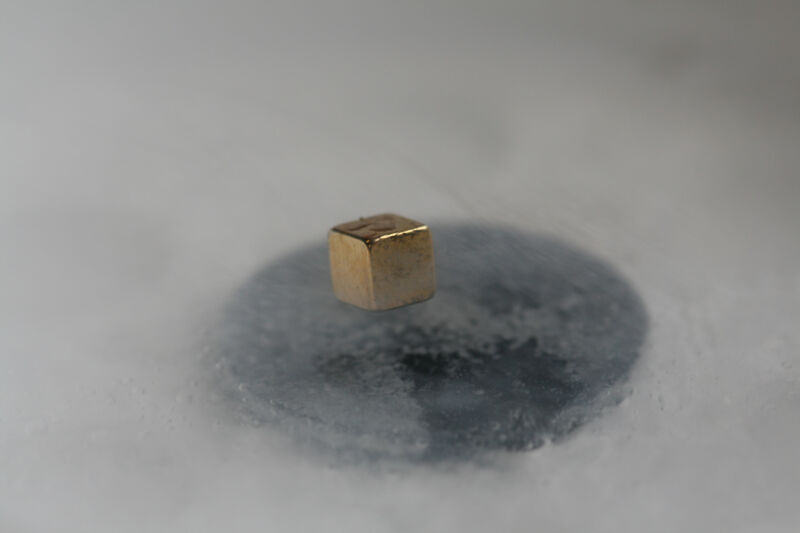The summer of room-temperature superconductivity was short-lived. It started with some manuscripts placed on the arXiv toward the end of July, which purportedly described how to synthesize a compound called LK-99, which would act as a superconductor at temperatures above the boiling point of water. High enough that, if its synthesis and material properties worked out, it could allow us to replace metals with superconductors in a huge range of applications.
Confusion quickly followed, as the nature of the chemical involved made it difficult to know when you were looking at the behavior of LK-99 and when you were looking at related chemicals or even impurities.
But the materials science community responded remarkably quickly. By the end of August, pure samples had been prepared, the role of impurities explored, and a strong consensus had developed: LK-99 was not a superconductor. Best yet, the work nicely provided explanations for why it had behaved a bit like one in a number of situations.
A complex chemical
As we discussed in detail in our story linked above, LK-99 is a complicated chemical. It's largely a lead-phosphate crystal, but some of the lead atoms are displaced by copper. How many copper atoms are present may not only vary from preparation to preparation; they can potentially vary between different areas of the same crystal. Its chemical formula is technically Pb10-xCux(PO4)6O, with the x representing the unknown number of replacements.
It's also what's called a polycrystalline material, meaning that a single chunk of it may be a composite of multiple crystals with different orientations. So, for any properties that depend on the orientation of the crystal, it's easy to end up examining a composite of behaviors from multiple individual crystals.
Finally, the preparation of LK-99 described in the initial report produced it via a chemical reaction, leaving open the possibility that there were contaminants or byproducts affecting the measurements of its properties.
This last possibility turned out to be a key to explaining one of the reported properties of LK-99: a sharp transition in its ability to conduct current that occurred just above the boiling point of water.
Prashant Jain is a professor in the Chemistry Department at the University of Illinois, and he's had funding to work on copper sulfide since 2011. He noticed two critical things about the initial reports of LK-99. One is that the reactions used to produce it could potentially produce copper sulfide as an additional product. The second is that the temperature where LK-99 supposedly started superconducting (104° C) is also the temperature where copper sulfide undergoes a phase transition.
Changing phase and conductivity
In a manuscript deposited on the arXiv, Jain describes this complicated phase transition in detail. Above 104° C, copper sulfide remains a solid but becomes more disordered, which allows its constituent ions to move more readily, increasing its conductivity somewhat. But Jain notes that things get more complicated when the material is exposed to air, as oxygen can react with some of the copper and pull it out of the copper sulfide structure.
This creates charged "holes" in the structure of the copper sulfide, which can also conduct electricity. And they do so far more effectively in the ordered stage of the crystal that forms below 104° C. While these two effects can offset each other, the holes are far more effective at conducting current, so this effect dominates, leading to much higher conductivity below 104° C—an effect similar to that ascribed to the onset of superconductivity.



3175x175(CURRENT).thumb.jpg.b05acc060982b36f5891ba728e6d953c.jpg)
Recommended Comments
There are no comments to display.
Join the conversation
You can post now and register later. If you have an account, sign in now to post with your account.
Note: Your post will require moderator approval before it will be visible.